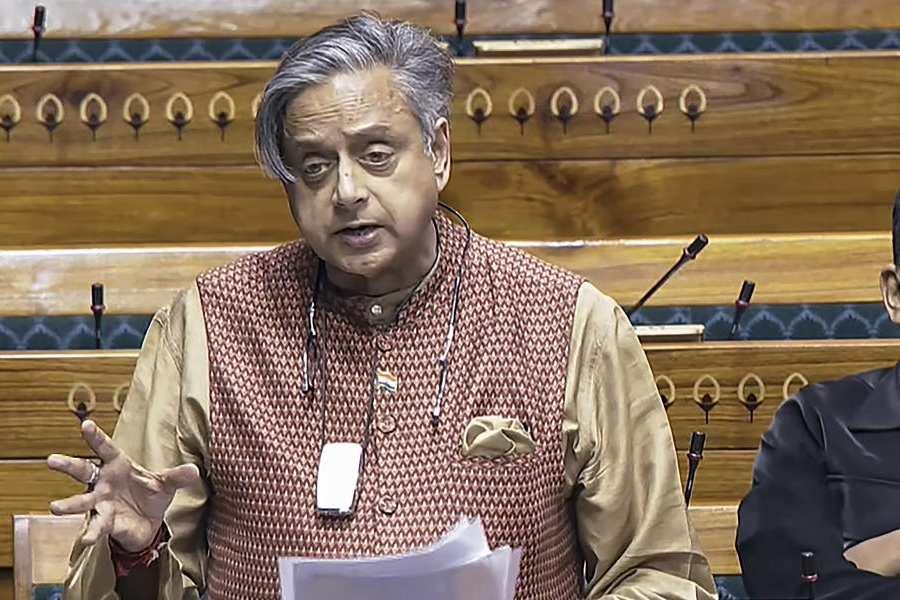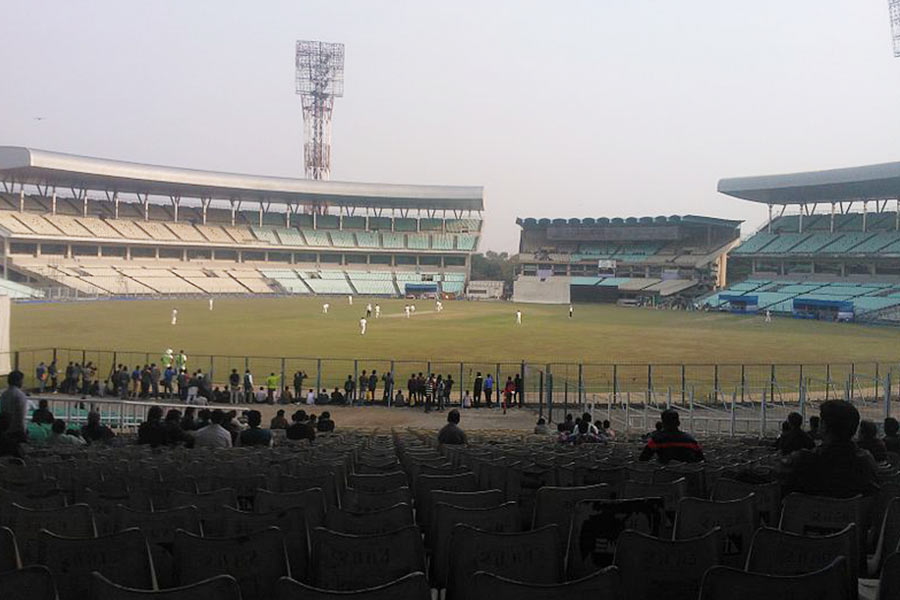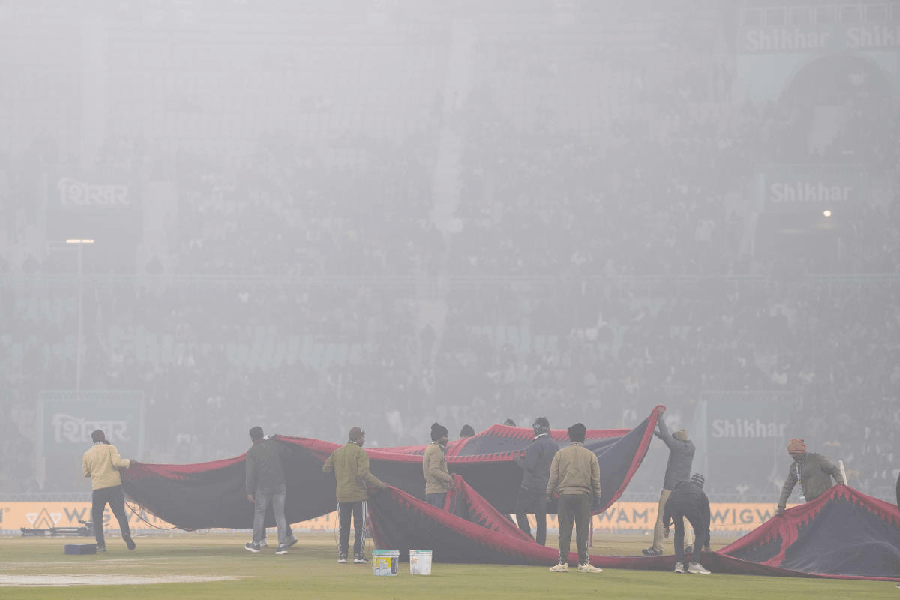 |
| LOAN ACT: Rakhi Sawant in Om Shanti |
Dia Mirza was not sure the offer appealed to her. But the Hindi film actress soon realised that making a debut in Bengali cinema was not such a bad idea after all.
“I feel silly about my initial hesitation. Cinema is cinema. As long as the script is motivating and the makers are credible, language is not a barrier. I would certainly consider doing more and more regional cinema and make good of an opportunity to be a part of good cinema,” she says.
Mirza is slated to feature in an upcoming Bengali film, Paanch Adhyay. And she is one among several Bollywood actors testing the waters in Tollywood.
Consider this: Monica Bedi did an item number in Gautam Saha’s Hridoye Lekho Naam, which was released in May. Rakhi Sawant is doing a dance number for Shatabdi Roy’s Om Shanti, to be released on June 29. Preeti Jhangiani is set to appear in Mistake. Director Nitish Ray’s Jole Jongole, to be released later this year, features Jackie Shroff, Ashish Vidyarthi and Tinnu Anand.
Experts believe the recent commercial success of Bengali films is prompting Tollywood directors to cast their nets wide. “The past two years have been impressive for the Bengali film industry,” says Sandip Biswas, director, Deloitte Touche Tohmatsu, the media and entertainment consultancy. “It has witnessed the commercial success of a new breed of offbeat stories with original content triggered by a host of young directors, actors, writers, musicians and technicians.”
New stories demand new actors, which is why filmmakers stress that they seek out Bollywood artistes when their scripts need them. “I have chosen my stars keeping in mind the demands of my script. Tinnu Anand has the role of a Hindi-speaking boatman, Vidyarthi is a hunter and Shroff, naturally flamboyant, has a flamboyant role,” Nitish Ray stresses. “One has to look outside Tollywood for such characters.”
 |
| Preeti Jhangiani (centre) in Mistake |
Shatabdi Roy, likewise, zeroed in on Sawant for her next film because it had a role that suited Sawant to a T. “Rakhi is in reality an item girl and her experience would be valuable for the film. I’d like to build on what she might have faced as an item girl, her struggles and how she finally became famous,” Roy says.
Director S.K. (he goes only by his initials) says he chose Jhangiani for Mistake because her role is that of a college student who is from a different state and comes to Calcutta to study. “We needed someone who didn’t look or speak like a Bengali.”
Director Sandip Ray points out that his films have featured actors from Mumbai such as Anand and Vidyarthi. “That was totally for the need of the script,” he says. It also helped that Anand, who had earlier worked with Satyajit Ray, knew Bengali.
 |
| Tinnu Anand (centre) in Jole Jongole; |
Anand stresses that he had long dreamed of a role in Bengali cinema. “I never got a chance with Satyajit Ray, so I was very happy when Sandip Ray gave me a break,” says Anand, who, apart from Jole Jongole, figures in one of Krishnendu Moitra’s upcoming Bengali films.
The actor also features in Sumona Mukherjee’s Kala Khatta or Dreams Unlimited. “I have had to be careful in choosing my cast and crew,” Mukherjee says. “The dialogues are in Bengali, English and Hindi — the film has a cosmopolitan angle.”
Of course, it’s not always the script. The glamour quotient can’t be ignored either. “There is no point denying that Bollywood scores over Tollywood in the glamour world,” says director Saha, who holds that his film is still running successfully because people want to watch Monica Bedi.
Like Mirza, many of the actors are looking forward to their Bengali debuts. Sawant stresses that she always wanted to act in a Bengali film. “I was very happy when Shatabdi Roy approached me,” she says. Today’s Bengali directors, Sawant adds, are looking at themes that are not typically Bengali. “Even the audience in Bengal wants to watch movies that have item numbers,” she says.
Bedi, who is now going to play the lead role in Saha’s new film, adds that not knowing Bengali is not going to be a factor. “Language is not a barrier at all,” she stresses. Jhangiani, who has worked in Tamil, Telugu, Kannada, Punjabi and other regional films, agrees. “Though I do not know Bengali, the role was enough to convince me to go ahead with it. The character has many shades and demands quite a bit of emoting.”
The presence of Bollywood actors increases a film’s budget, but producers are not complaining. Avik Bagchi, producer of Jole Jongole, a bilingual film, says directors have to be given “the best of opportunities to get the best out of them”.
Though some fear that the advent of Bollywood actors may adversely affect home-grown talent, most industrywallahs are optimistic about the future. “As an actor, I appeared in Bangladeshi films. It only helps an actor to grow if there is such an exchange,” Shatabdi Roy stresses.
Pritam Sarkar who wants to cast Bollywood actors in two of his films — The Pen and Kuashar Kobita — insists that Tollywood is mature enough to welcome actors from elsewhere. “We have many talented actors in Bengal, but sometimes a script demands that we take other actors,” he says.
As the industry grows, clearly there will be scope for expansion — and more and more Bollywood actors will find space. The growth of television has done its bit for the expansion too. Biswas of Deloitte points out that Bengali TV channels have emerged as one of the key revenue streams for cinema makers in Bengal. “The Bengali film industry, known for its rich past, is now working fast in reinvesting itself to its former glory,” he says.










